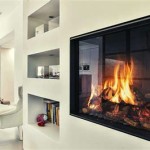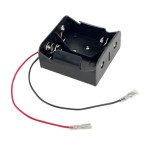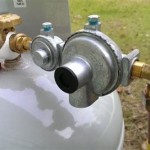Lighting the Pilot Light on a Gas Fireplace: A Comprehensive Guide
Gas fireplaces provide warmth and ambiance within a home, often serving as a focal point in living spaces. A crucial component of a gas fireplace is the pilot light, a small, continuous flame that ignites the main burner when heat is desired. Understanding how to light the pilot light is essential for safe and effective operation of the fireplace. This article will outline the steps involved in lighting the pilot light, common issues that may arise, and safety precautions to take.
Understanding the Pilot Light System
The pilot light system in a gas fireplace is a safety mechanism designed to ensure that gas is only released when a flame is present. It typically consists of a pilot light assembly, a thermocouple or thermopile, and a gas valve. The pilot light assembly houses the pilot light itself, a small nozzle that releases a controlled amount of gas. The thermocouple or thermopile is a sensor that generates a small electrical current when heated by the pilot flame. This current signals the gas valve to remain open, allowing gas to flow to both the pilot light and the main burner. If the pilot light goes out, the thermocouple or thermopile cools, the electrical current stops, and the gas valve closes, preventing gas from accumulating and posing a safety hazard.
Different gas fireplaces may have slightly different pilot light systems. Some older models utilize a standing pilot light, which remains lit continuously. Newer models often employ an intermittent pilot ignition (IPI) system or a direct spark ignition (DSI) system. These systems only ignite the pilot light when heat is requested, conserving energy and reducing gas consumption. However, even fireplaces with IPI or DSI systems may experience pilot light issues that require manual intervention.
Step-by-Step Instructions for Lighting the Pilot Light
Before attempting to light the pilot light, it is crucial to ensure that the gas supply to the fireplace is turned on. Typically, there is a gas shut-off valve located near the fireplace or on the gas line leading to the fireplace. The valve should be in the open position, usually parallel to the gas pipe. If the gas has been turned off for an extended period, such as during the summer months, it may be necessary to purge the gas line to remove any air that may have accumulated.
Next, locate the gas control valve, typically found behind an access panel on the lower portion of the fireplace. The control valve will have a knob or buttons labeled with positions such as "ON," "OFF," and "PILOT." Turn the control knob to the "OFF" position and wait for approximately five minutes to allow any accumulated gas to dissipate. This waiting period is crucial to prevent a potential explosion when attempting to light the pilot. After the waiting period, turn the control knob to the "PILOT" position.
While holding the control knob in the "PILOT" position, press the igniter button or switch. The igniter creates a spark that should ignite the pilot light. Continue holding the control knob in the "PILOT" position for approximately 20-30 seconds after the pilot light ignites. This allows the thermocouple or thermopile to heat up and generate sufficient electrical current to keep the gas valve open. After 20-30 seconds, release the control knob. If the pilot light remains lit, turn the control knob to the "ON" position. The fireplace is now ready for normal operation. If the pilot light does not stay lit, repeat the process, ensuring that the control knob is held firmly in the "PILOT" position for the full duration.
Troubleshooting Common Pilot Light Issues
Several factors can contribute to pilot light problems. A common issue is a dirty pilot light orifice. Dust, lint, or other debris can accumulate in the orifice, obstructing the flow of gas and preventing the pilot light from staying lit. To clean the orifice, carefully remove the pilot light assembly and use a small needle or wire to gently clear any obstructions. Avoid using excessive force, as this could damage the orifice.
A faulty thermocouple or thermopile is another potential cause of pilot light issues. If the thermocouple or thermopile is not generating sufficient electrical current, the gas valve will close, extinguishing the pilot light. To test the thermocouple or thermopile, a multimeter can be used to measure the voltage output. If the voltage is below the manufacturer's specifications, the thermocouple or thermopile should be replaced. Replacement thermocouples and thermopiles are readily available at most hardware stores or fireplace supply retailers.
Low gas pressure can also prevent the pilot light from staying lit. If the gas pressure is too low, the pilot flame may be too weak to heat the thermocouple or thermopile sufficiently. Gas pressure issues may require the attention of a qualified gas technician. In some cases, the gas regulator may need to be adjusted or replaced to ensure adequate gas pressure to the fireplace.
Drafts in the room can also extinguish a pilot light. Air currents can disrupt the small pilot flame, causing it to flicker and eventually go out. Ensure that the fireplace area is free from drafts by closing windows or doors. Inspect the fireplace chimney or flue for any obstructions that may be causing backdrafts. A professional chimney sweep can inspect and clean the chimney to ensure proper ventilation.
Finally, if the fireplace has an electronic ignition system (IPI or DSI), a faulty igniter can cause pilot light issues. The igniter is responsible for generating the spark that ignites the pilot light. If the igniter is not producing a spark, the pilot light will not ignite. Test the igniter with a multimeter to check for continuity. If the igniter is faulty, it should be replaced.

How To Relight A Millivolt Valve Gas Fireplace Pilot Light Tophat Pro

How To Light The Pilot On A Gas Fireplace

Should I Turn Off The Pilot Light In Spring B C Comfort Fireplace Hvac Repair Installation

How To Know The Difference In Two Types Of Pilot Lights

How Can I Re Ignite My Pilot Light We Love Fire

How To Light Pilot On Gas Fireplace

Starting A Gas Fireplace Raleigh Nc Chimneys Plus

How To Light A Gas Fireplace

Gas Fireplace Won T Stay Lit Magic Touch Mechanical

How To Fix A Pilot Light In Your Gas Fireplace Vertical Chimney Care
Related Posts








